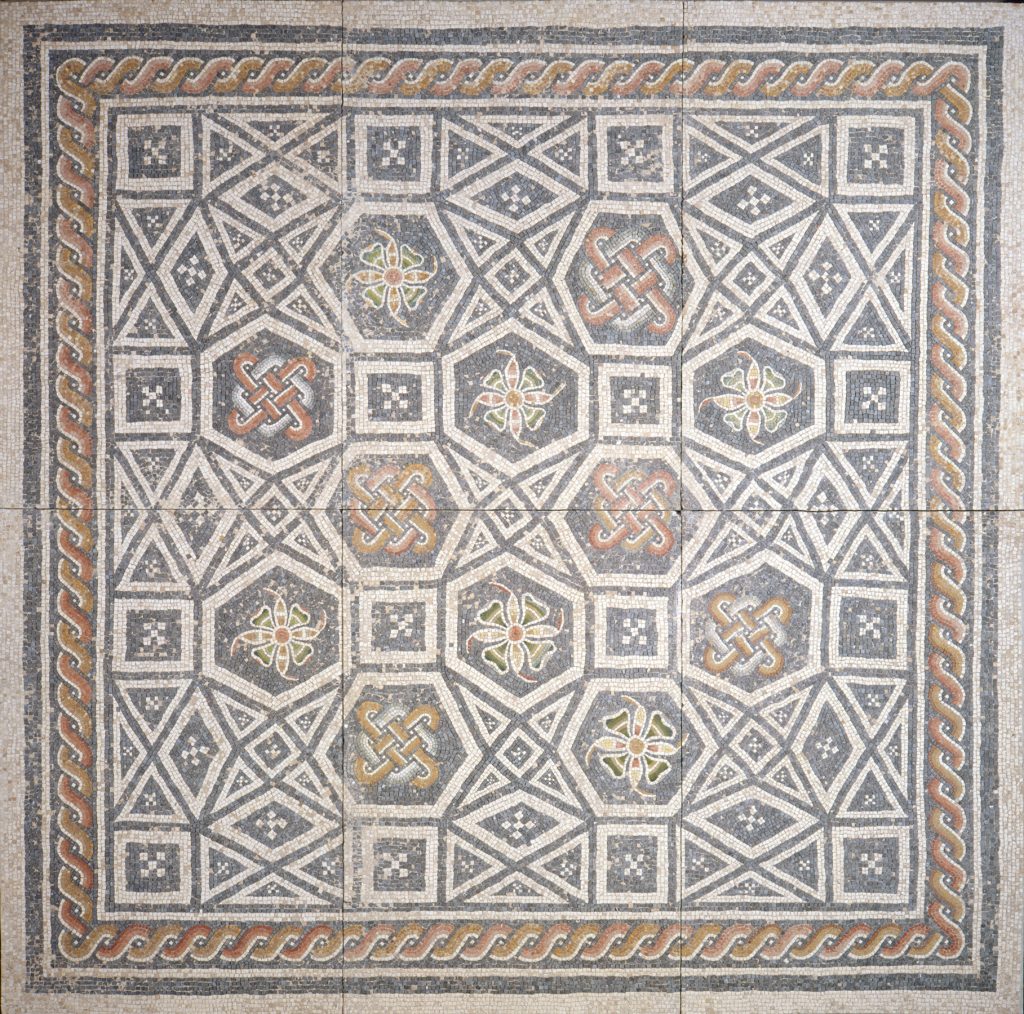NCMA Explore: Polychrome Mosaic Fragment (NCMA Explore Resource)
Make a copy of the slides.
About the Culture
At its peak in 117 ce, the Roman Empire extended from Britain to the Eastern Mediterranean and North Africa to Northern Europe. This mosaic likely comes from Vienne, a city in Gallic Rome (modern-day southeastern France), which became an urban center of the Roman Empire after Julius Caesar’s Roman forces conquered the Gauls in 50 BCE.
About the object
This mosaic is made from tesserae, small pieces of marble, limestone, and glass set in grout or cement, and features many geometric patterns.
Look Closely
- What shapes and patterns can you identify in this mosaic? Identify at least four geometric shapes and describe how they are combined and repeated with other shapes.
- Look at the mosaic and consider its parts and the work as a whole. How do you think the mosaic was made? What would the design and construction process look like for this?
Discuss
- This 1,800-year-old mosaic was part of the floor in someone’s home. What can you find in your home that uses a similar construction process and/or design elements? Where in your home do you see these things?
- Recent research suggests that this mosaic comes from Roman France. How do you think historians and archaeologists can figure out where this mosaic probably comes from without a complete record of its history?
Reflect
- For elite families in ancient Rome, homes were important sites for making business and social connections. Multiple generations of a family would live in a home with enslaved staff members, friends, and even business associates. Decorations such as mosaics demonstrated the wealth of a family.
- What similarities and differences can you find with home life today?
- How is social class tied to luxury items and brands in the home or in clothing today?
Learn more
Visit the “Learn More” sidebar to find more information about the object and culture.

